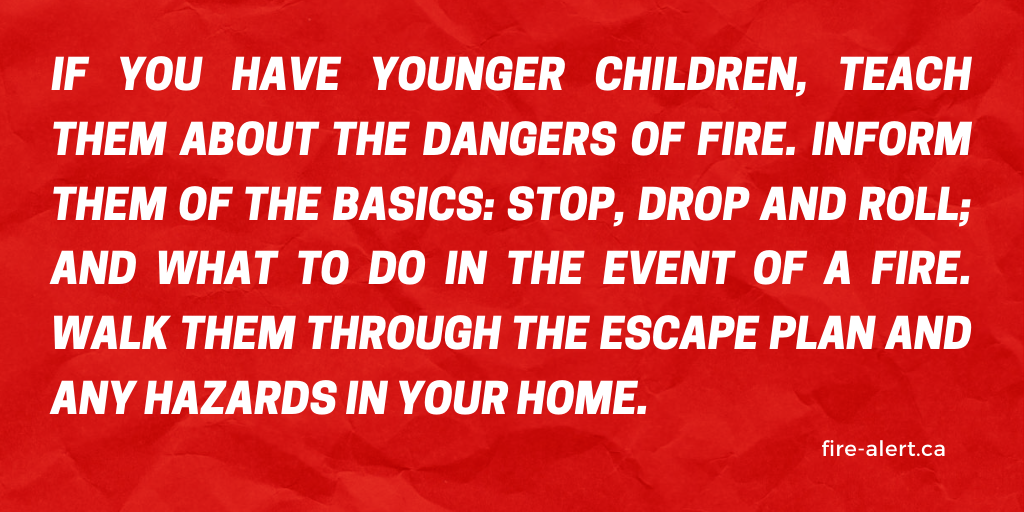Fire Prevention Tips for Residential Homes
Staying safe at home begins with the right planning from you and the members of your household. Being aware is not enough in the event of an emergency, and preventative action is crucial to saving lives.
The more prepared you are in a fire emergency, the more likely you are to evacuate your home safely. Here are some tips on how to prevent fires in your home and stay safe.
Install Smoke Detectors on Every Floor
Smoke detectors are often the first indication of fire and can prevent a fire before it happens. They should be installed on each floor of your home and be tested once a month. The batteries should be replaced once a year to maintain proper working order. Always keep your smoke detectors on, even while cooking.
Act Quickly In the Event of a Fire
The more well-thought out your plan is, the more likely you will act rationally – and be prepared to act fast. This means being able to get out of your house in a minute or less. Don’t wait for the fire to reach you, assist any household members that need it, and don’t run back in to get any essential items. To be prepared to act quickly, run through practice drills to better prepare yourself.
SafeHome.org also says to be as quick as possible if there’s a fire in your home:
“Don’t underestimate the speed of fire! In under 30 seconds, a small flame can become a big fire. It also doesn’t take very long for thick black smoke to fill a house, or for the house to become taken over by flames.”
Install Fire Extinguishers
Fire extinguishers can be vital if you need to fight a small fire and can prevent your household from experiencing a larger fire. Keep your fire extinguisher in the kitchen, garage back hallway or other easily accessible area in your home. They should be checked regularly and maintained to a working standard.
Create an Escape Plan
Create a detailed and organized plan to evacuate the home in the event of a fire. Draw out a map of your home and identify all exits and routes, like hallways, doors, and windows. Make sure everyone in your household is well aware of their escape routes no matter where they are in the home.

If you have younger children, teach them about the dangers of fire. Inform them of the basics: stop, drop and roll; and what to do in the event of a fire. Walk them through the escape plan and any hazards in your home. Keep any flammable chemicals out of the way of children.
Identify Any Hazards in the Home
The most common causes of fire are the appliances in your home and where you store certain flammable products. Cleaning and household products contain hazard label warnings on them and must be strictly followed to prevent any potential accidents.
Appliances like stoves, microwaves, and clothing dryers can all be potential flammable hazards.
The Government of Canada talks about fire safety with electrical appliances:
“Check for counterfeit electrical products that do not meet Canadian electrical safety requirements. Signs of counterfeit products include poor quality, very inexpensive price, grammatical errors and unusual fonts on the product, labelling or packaging. Regularly check and clean appliances with filters and screens such as dishwashers and clothes dryers. In the case of clothes dryers, leftover lint in the screen and piping can ignite in high temperatures, causing fires.”
If you’re interested in learning more fire prevention information and finding the right fire extinguisher for your home, contact Fire-Alert for assistance.